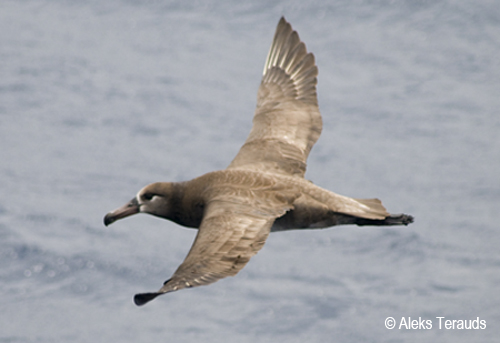Eric Gilman (College of Natural Sciences, Hawaii Pacific University, Honolulu, Hawaii, USA) and colleagues write in the open-access journal PloS ONE on reducing seabird mortality during line hauling.
The paper’s abstract follows:
“Bycatch in longline fisheries threatens the viability of some seabird populations. The Hawaii longline swordfish fishery reduced seabird captures by an order of magnitude primarily through mitigating bycatch during setting. Now, 75% of captures occur during hauling. We fit observer data to a generalized additive regression model with mixed effects to determine the significance of the effect of various factors on the standardized seabird haul catch rate. Density of albatrosses attending vessels during hauling, leader length and year had largest model effects. The standardized haul catch rate significantly increased with increased albatross density during hauling. The standardized catch rate was significantly higher the longer the leader: shorter leaders place weighted swivels closer to hooks, reducing the likelihood of baited hooks becoming available to surface-scavenging albatrosses. There was a significant linear increasing temporal trend in the standardized catch rate, possibly partly due to an observed increasing temporal trend in the local abundance of albatrosses attending vessels during hauling. Swivel weight, Beaufort scale and season were also significant but smaller model effects. Most (81%) haul captures were on branchlines actively being retrieved. Future haul mitigation research should therefore focus on reducing bird access to hooks as crew coil branchlines, including methods identified here of shorter leaders and heavier swivels, and other potentially effective methods, including faster branchline coiling and shielding the area where hooks becomes accessible. The proportion of Laysan albatross (Phoebastria immutabilis) captures that occurred during hauling was significantly, 1.6 times, higher than for black-footed albatrosses (P. nigripes), perhaps due to differences in the time of day of foraging and in daytime scavenging competitiveness; mitigating haul bycatch would therefore be a larger benefit to Laysans. Locally, findings identify opportunities to nearly eliminate seabird bycatch. Globally, findings fill a gap in knowledge of methods to mitigate seabird bycatch during pelagic longline hauling.”

Black-footed Albatross at sea, photograph by Aleks Terauds
Reference:
Gilman, E., Chaloupka, M., Wiedoff, B. & Willson, J. 2014. Mitigating seabird bycatch during hauling by pelagic longline vessels. PloS ONE 9(1): e84499. doi:10.1371/journal.pone.0084499.
John Cooper, ACAP Information Officer, 09 January 2014

 English
English  Français
Français  Español
Español